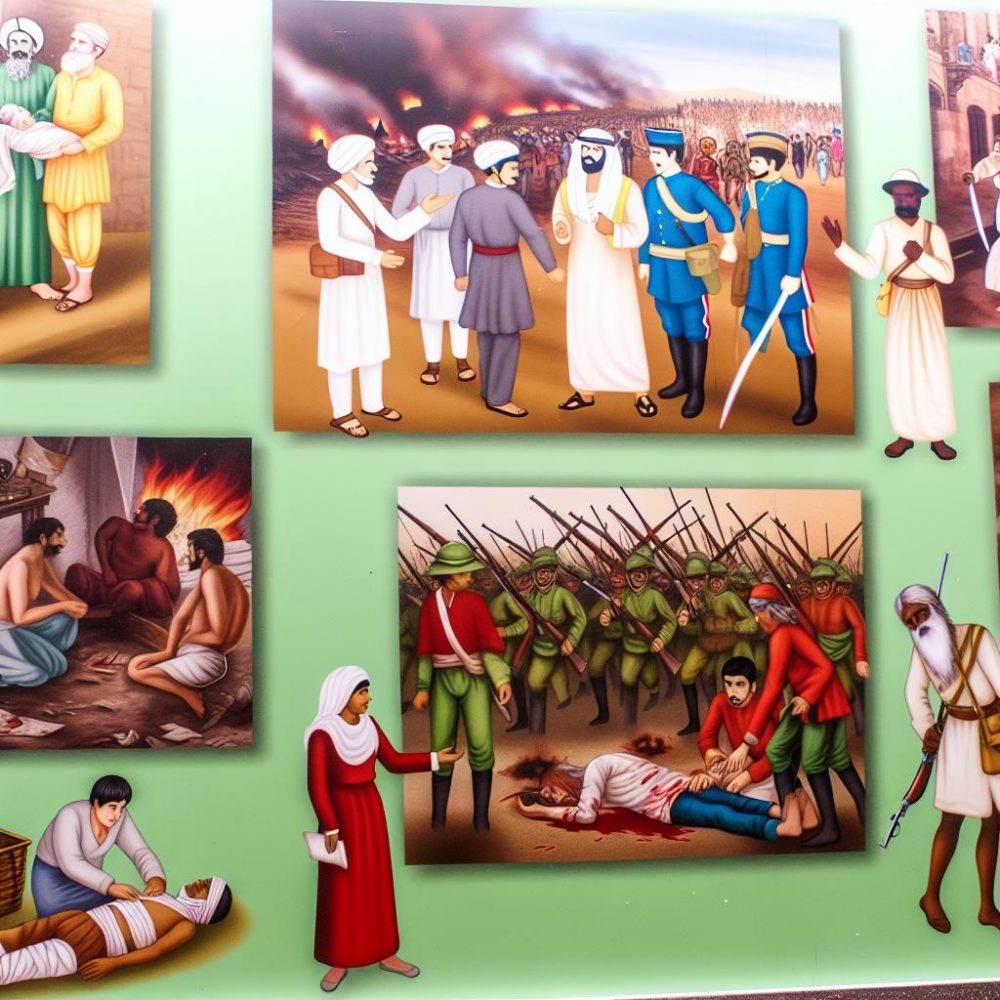
Overview of Resistance Against Colonial Powers
Throughout history, the relationship between colonial powers and the regions they dominated has been marked by conflict and resistance. Many nations and indigenous groups have staged wars of resistance, challenging the imposition of foreign control and the exploitation of local resources. These resistance efforts varied markedly in strategy, scale, and outcomes, yet they share common themes rooted in the desire for autonomy and self-determination. This textual exploration delves into the realities of such resistance efforts across different continents, shedding light on the various contexts and motives driving these struggles.
Africa’s Battle Against European Colonization
African nations experienced significant upheaval during the late 19th to mid-20th centuries as they fought against the onslaught of European colonial powers. Among the many conflicts that erupted during this period, the Maji Maji Rebellion (1905-1907) stands as a notable example. Occurring in what is now Tanzania, the indigenous population resisted German colonial rule through an armed rebellion. This uprising stemmed from deep-seated social and economic grievances regarding harsh policies and exploitative practices implemented by the colonizers. The Maji Maji Rebellion, named after a belief in a magic water that could protect warriors, highlights how cultural beliefs and traditional practices played a vital role in mobilizing resistance.
Likewise, the Mau Mau Uprising (1952-1960) in Kenya was a pivotal episode in the nation’s struggle for independence. This rebellion involved the Kikuyu ethnic group, who took up arms against British colonial rule. The motivation behind this movement was primarily the demand for the return of ancestral land and the reestablishment of autonomy. Despite its eventual suppression, the uprising significantly catalyzed political discussions that led to Kenya’s path to independence.
Struggles in Asia Against Western Powers
Asia also witnessed various resistance movements against colonial rule, exemplified by the Philippine Revolution against Spain in 1896. This insurrection emerged as a significant struggle that eventually led to the Philippines declaring independence in 1898. However, independence was short-lived as the Philippines soon confronted American colonization efforts, resulting in the Philippine-American War (1899-1902). The resistance during this period underscores a determined fight for sovereignty despite shifting colonial powers.
Another significant example of Asian resistance can be found in the Vietnamese Resistance to French colonization. Initially manifesting as a localized insurgency, this resistance evolved into a prolonged struggle that culminated in the First Indochina War (1946-1954). The Vietnamese resistance narrative is emblematic of a long-term commitment to independence, combining guerrilla tactics with diplomatic efforts to eventually expel foreign rulers.
Latin American Responses to Colonial Rule
Latin America was ripe for resistance against European colonials, especially during the early 19th century when countries across the continent sought independence. Figures such as Simón Bolívar played integral roles, leading movements that successfully gained independence for nations like Venezuela, Colombia, and Bolivia. Bolívar’s efforts were characterized by strategic military campaigns and an emphasis on unifying disparate regions against common colonial oppressors.
The Haitian Revolution (1791-1804) holds a unique place among Latin American resistance movements. In this case, enslaved Africans revolted successfully against French colonial and slavery systems, establishing Haiti as the first independent black republic. The revolution was a monumental achievement in the fight against oppressive systems and served as a beacon of hope for other enslaved and oppressed peoples.
Common Motivations Behind Resistances
Resistance movements against colonial powers were driven by a set of commonly shared motivations:
– **Nationalism and Identity:** Numerous revolts were fueled by a collective sense of national identity and the urgent need to preserve cultural heritage. Colonized peoples often sought to assert their distinct cultural norms in opposition to the assimilationist policies of colonial powers.
– **Economic Exploitation:** The economic structures imposed by colonial regimes frequently led to the extraction of local resources to the detriment of indigenous economies. The exploitative practices often resulted in impoverishment and social turmoil, sparking resistance among local populations.
– **Political Autonomy:** A central motivation for these resistance efforts was the desire for self-rule and the removal of intrusive foreign control. Native leaders and groups aspired to reclaim their right to govern their own affairs without external interference.
Conclusion
The wars of resistance against colonial powers have left an indelible mark on the political landscape of modern nations. These struggles reflect a universal quest for freedom and sovereignty, as various groups worldwide have fought against domination to establish their own historical trajectories. The legacy of these resistance movements continues to resonate, underscoring the enduring importance of autonomy and self-determination. For those interested in a deeper understanding of these resistance movements, extensive historical accounts and analyses can be found in scholarly sources and history databases, offering insights into the complex dynamics between colonial powers and the resistance they elicited.